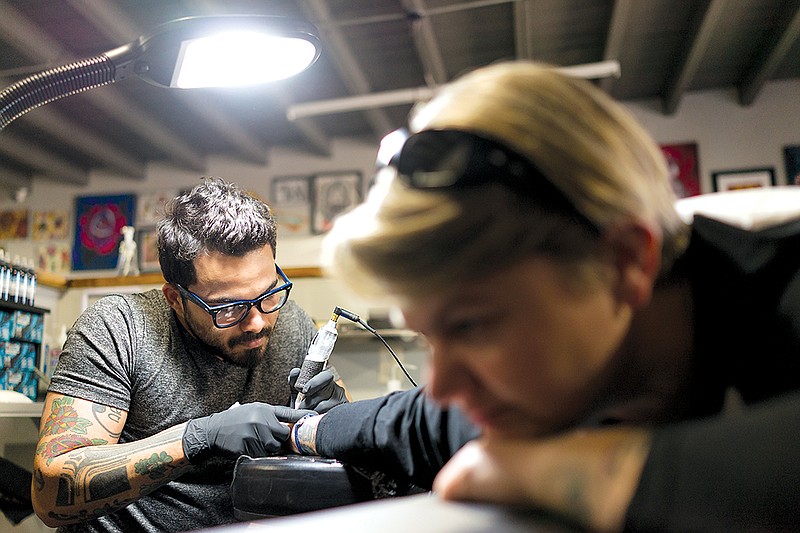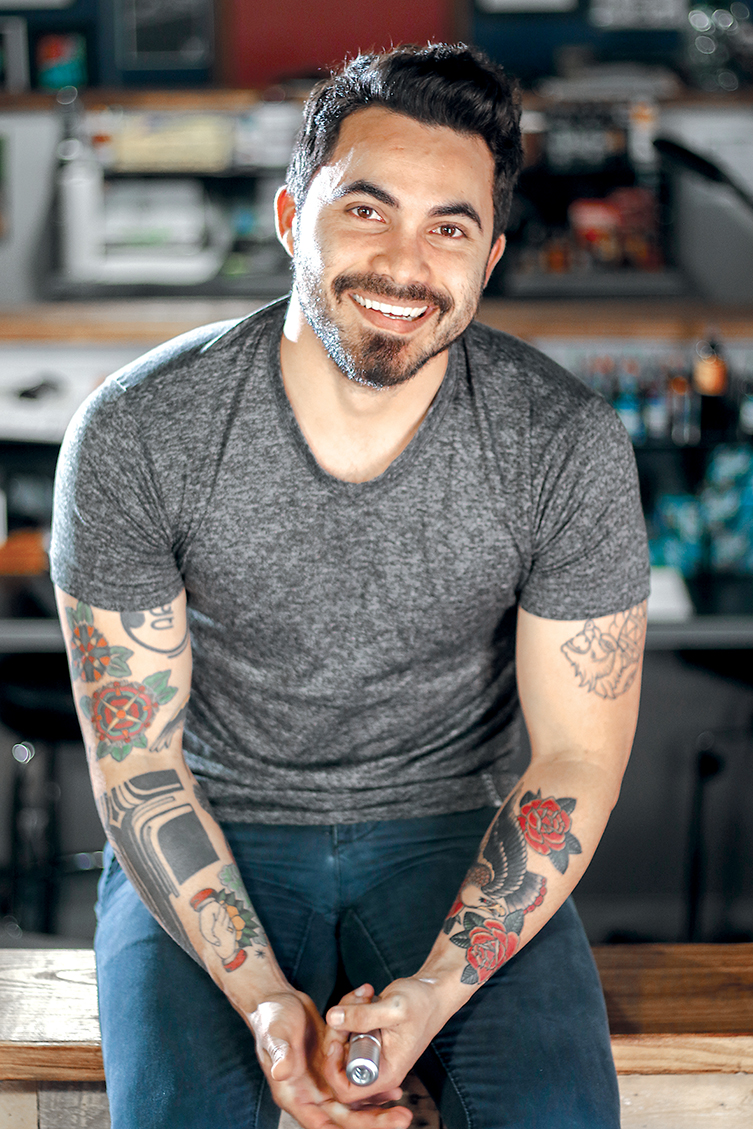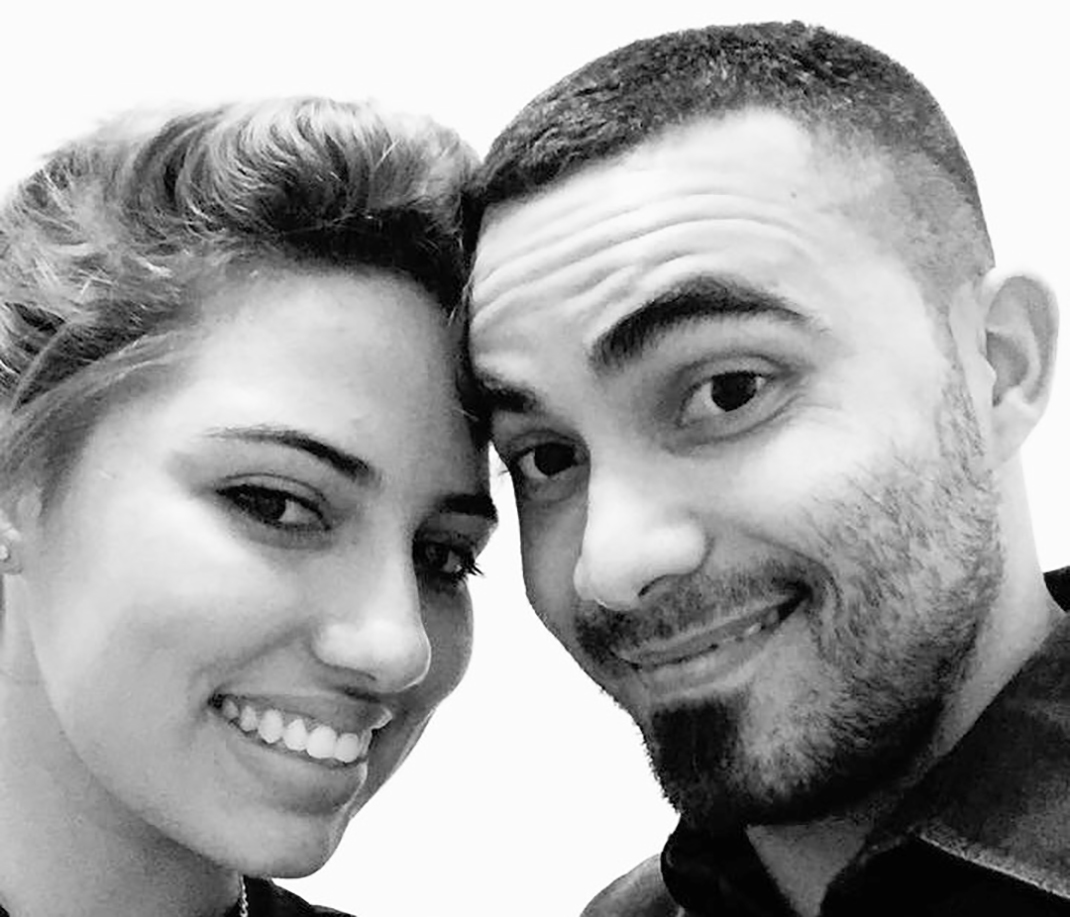As Anier Fernandez crossed the U.S. border for the first time in his life, he knew only three things: He had never left his home country of Cuba before, he had only $300 to his name, and he had no other choice.
An artist by trade, Fernandez was originally headed to an art show in Mexico City, but the artwork he'd carefully and excitedly packed to ship to meet him - much of which was pre-sold and would cover the cost of his return ticket - never arrived. He had paid a $2,000 fee to participate in the show, and with his art missing and the authorities unable to do anything aside from filing a report detailing the 10 pieces, hopelessness consumed him.
That was March 8, 2014.
Three years later, the 28-year-old Fernandez is making a name for himself as Main Line Ink's accidental apprentice. He is a gifted artist, tattoo shop co-owner Jennifer Edge is quick to say - unless Fernandez is listening, in which case she'll tell him to "get back to practicing" and toss him a knowing grin.
"We can't let his ego get to him," she laughs. "But the kid has been tattooing for two months, and look at his work. It's incredible."
Fernandez simply tucks his head back down and refocuses on his work, asking for Edge's critique.
Is the pressure with the needle enough? Too much? Are the lines clean enough?
"I still have a lot to learn," he says.
Fernandez graduated from the premier Oscar Fernández Morera Academy of Art in Trinidad, Cuba, a widely respected and intensive art school.
"I'd been drawing and doing art since I could pick up a pen," he says.
Though he recalls an idyllic youth - Cuba is an exceptionally safe place to grow up in regards to crime rates, which are very low, he stresses - a government-manipulated currency, widespread poverty, lack of fresh produce and the knowledge that leaving was largely forbidden shaped his teenage years and drove his frustration and artistic passion.
Much of the allure of obtaining an art degree was also his fascination with a rare promise: the opportunity to leave his sheltered country. The ability, as an artist, to easily obtain a visa and experience a world otherwise shuttered to Cubans called to him.
However, he says, he didn't expect to leave so soon - or so suddenly.
How Fernandez made his way to a tattoo shop in Chattanooga is as improbable as his unexpected and unplanned new life in America. In tears, he called a friend from that Mexican airport; a friend who had made his way from Cuba to Chattanooga several years earlier. That friend was willing to buy him a plane ticket to join him and, due to improving relations between the United States and Cuba, a same-day visa was available to Fernandez.
That was the first in a serendipitous domino effect. Fernandez calls his visa a "privilege" of belonging to the artistic community, as such specialty skills often open doors that harsh travel regulations around the world would otherwise keep closed. The vast majority of people don't have such speedy options available, he says.
But that doesn't mean Fernandez hasn't faced hardships. Arriving in Chattanooga on March 11, 2014, he spoke no English. He had no job. His art was gone. And the love of his life, a woman named Elizabeth, was still expecting him to return to Sancti Spíritus, Cuba, clueless as to how drastically his existence had changed.
"I sent her an email," he says with a laugh, looking down at the tattoo shop's floor. "I didn't have the balls to call her."
Now, the couple talks every day - "every single day," he emphasizes - and Elizabeth is his wife, though they have only seen each other once since the wedding. A visit to his home country to see her in 2016 afforded the opportunity for a whirlwind ceremony. The couple is working to attain a visa so she can join her husband and the new future he has been passionately working to create.
Cuba has no future for an aspiring artist, Fernandez says, and he hopes everything will line up for his now-wife the way things did for him. Though she was in medical school, she dreams of the land of opportunity he describes during their daily conversations. First, however, her visa must be approved. Pending that, she will have to redo her schooling on another continent, in another language.
But Fernandez has faith - and hopefully a little luck left.
"I just hope to get her here this year," he says.
For eight months following his arrival, Fernandez worked at Amazon. Then came the second domino in his fortuitous new life. He landed a job as an artist for the now-completed M.L. King AT&T mural project, allowing him to return to the career he loves and paint the depictions of the people and landscape that now adorn the building.
The third domino, which fell about a year ago, came via the same friend who'd purchased Fernandez's plane ticket to America - and who had a connection to Main Line co-owners Edge and Danny Siviter.
"We never planned on having an apprentice," Edge says. "Unless I decide to have a child, he'll be the only one I ever have."
But when Fernandez sent his artwork to the studio, which has steadily been making a name for itself since opening several years ago on Main Street in the Southside, Edge says she felt compelled to meet with him. It was more than just the artwork in his portfolio that drew them together.
"When I heard his story, I knew," she says. "I had goosebumps."
Fernandez had gotten a few tattoos from his friends in Cuba but never really felt connected to the alternative art form. And he definitely never envisioned becoming a tattoo artist himself. Then he realized painters and tattoo artists can share the same underlying mission.
"You paint on people. They're walking around with it," he says, pausing as he searches for the words to fully articulate his newfound passion in English. "You become a walking gallery," he clarifies, "and that's incredible. It's beautiful. I dream about it every single day."
Technically, tattoo shops are illegal in Cuba, though the stigma is starting to disappear, he says.
"No one says anything," he says. "I even see police [there] with tattoos."
As he's become more versed in this new field of art, Fernandez has looked to blend the surrealism concepts he used most in his painting days with the watercolor style favored by Edge and the clean linework for which Siviter is known, forging a style all his own. Previous to his move out of Cuba, he preferred tattoos with a traditional style, characterized by solid black outlines, a muted and limited color palette, minimal detail and a focus on precision of lines.
"Now it's realism, but I want to put a little bit of watercolor, a little bit of that bulk line on it," he says. "It's going to change a lot more. When I moved here from Cuba, my concepts shifted. I'm just trying to consume it all."
The same sense of despair that haunts him from those initial three days in the airport also inspires him, he says. It's the reason he strives to be the first artist in the shop in the morning, and he's frequently the last to leave.
Sometimes Fernandez forgets about all the dominoes that perfectly lined up to give him a new life. It often takes a road sign or the sight of an American flag to remind him he's not going to wake up back in that Mexican airport with tears in his eyes and seemingly no way to move forward.
In October, Fernandez will be a fully licensed tattoo artist with the shop he now views as his second home. Hopefully, he will do so with his wife Elizabeth by his side. And in two years, he will apply to exchange his permanent U.S. residency for full-fledged American citizenship.
"This is more than an apprenticeship for me," he says. "It's everything."



